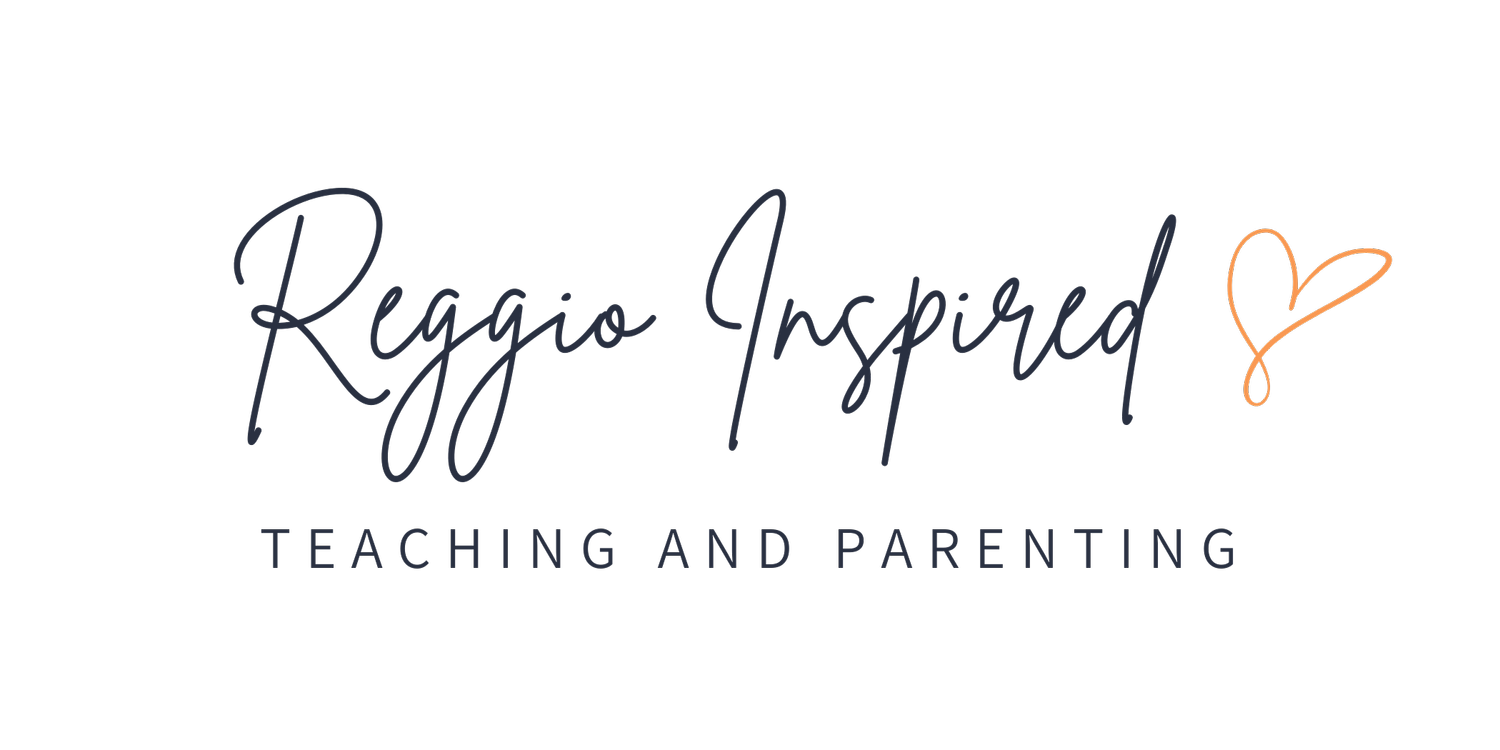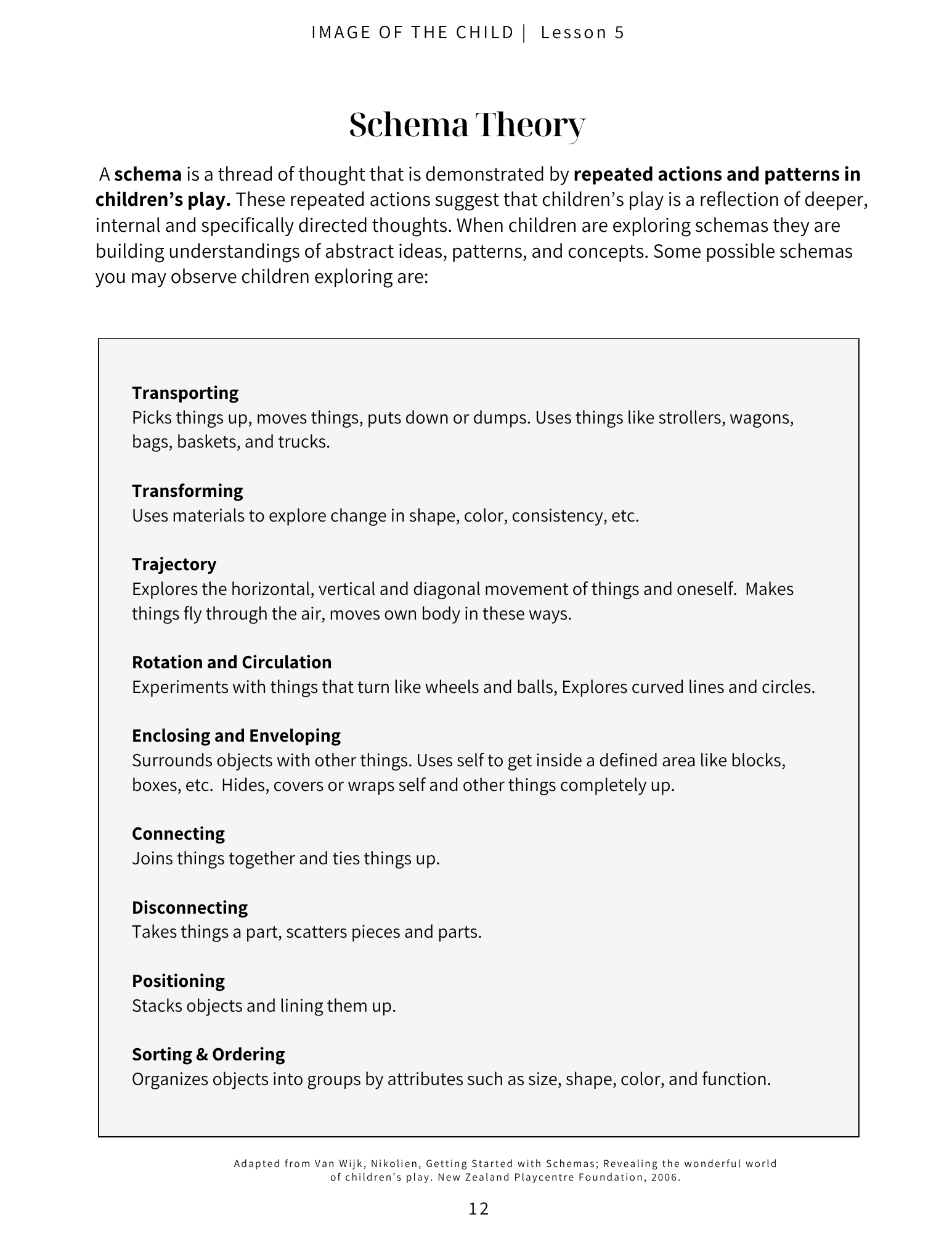Schemas in Early Childhood: What Every Teacher Should Know
If you’ve ever watched a child fill and dump the same basket twenty times, gather a bunch of odds and ends into a zippered purse, or send cars flying off a ramp again and again—you’ve met schemas. Recognizing these deep patterns is a powerful way to honor children’s thinking, design richer provocations, and build trusting partnerships with families.
This guide translates schema theory into everyday practice—what to look for, how to plan, and how it shifts your perspective from “behavior management” to meaning-making.
What are schemas?
A schema is a thread of thought that is demonstrated by repeated actions and patterns in children’s play. These repeated actions suggest that children’s play is a reflection of deeper, internal and specifically directed thoughts. When children are exploring schemas they are building understandings of abstract ideas, patterns, and concepts. Here are some of the schemas you might see children exploring. (Excerpt from our Reggio-Inspired Educator’s Course.)
Why schemas matter in your classroom
How you see the child: That “doing it again and again” is curiosity, not stubbornness.
What you plan next (emergent curriculum): Schemas give you threads to follow—they can shape tomorrow’s setup, small groups, and longer projects.
How you document learning: You can name what you see more clearly (e.g., cause and effect, sorting, systems, perspective).
Equity & relationships with families: Adults start to see strengths, not “mess”—this lens normalizes exploration and builds partnership.
How to notice schemas
1) Observe patterns, not single moments. Look for repetition across contexts and days.
2) Collect three kinds of evidence:
Action: What the child does (verbs).
Strategy: How they adapt when something changes.
Idea: Their words, gestures, or drawings about what they think is happening.
3) Write neutral notes (example): 9:12 a.m. – Mateo carries five blocks to the rug, returns for more (transporting). When basket is empty, he fills it with pinecones and repeats. Says, “I need more fuel.”
4) Check your hunch: Offer a short, targeted provocation aligned to that schema. If engagement deepens, you’re on the right track.
Introducing Schemas to Families
Introduce schemas to families early in the year—Back-to-School Night or conferences work well. Keep it simple: explain that schemas are the repeatable play patterns children use to learn (think fill-and-dump, lining up, transporting). Invite families to watch for these patterns at home, snap a quick photo, and share what they notice.
We recommend Michelle Thornhill’s Loose Parts by Schema chart—feel free to download the free PDF and share it with families so home and school can support the same patterns together.
Shifts in perspective you’ll feel quickly
From correction → connection: You’ll replace “Stop throwing!” with “Let’s take throwing to the ramp station.”
From theme planning → learner planning: You won’t chase topics; you’ll follow motives.
From outcomes → processes: You’ll celebrate strategies, not finished products.
From isolated incidents → patterns of growth: Behavior trends become data that guides your next provocation.
Final Thoughts
Of all the ideas in early childhood, schemas may be the most powerful lens you’ll learn. They reveal how children think, what motivates them, and why certain play repeats. We believe these patterns don’t disappear—they shape who we become and what we love throughout life. May this inspire you to slow down, watch closely, and design simple setups that meet children where their curiosity already lives.
Want to go deeper?
When you’re ready for a deeper dive, we offer a self-paced Reggio-Inspired Educator’s Course (10 PD hours) grounded in real classrooms—provocations, schemas, documentation, and project work with practical planning tools. No pressure—use it as a resource, and reach out anytime if school pricing would support your team.
About the Authors:
Megan Haynes and Priscilla Patti are two highly experienced and qualified early childhood educators who are passionate about teaching in a Reggio-Inspired way. They firmly believe in its transformative power in early childhood education. The authors share firsthand accounts of their experiences utilizing the Reggio Emilia Approach in Fort Collins, Colorado.





